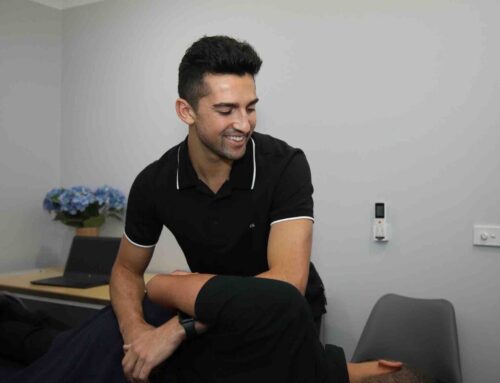Shoulder pain can significantly impact your daily life, hindering everything from simple movements to more strenuous activities. One common culprit behind this discomfort is the SLAP lesion.

SLAP stands for “Superior Labrum Anterior and Posterior.” Essentially, it refers to an injury to the labrum, the ring of cartilage that surrounds the shoulder socket and helps keep the ball of the joint in place. A SLAP lesion occurs when there is a tear in the upper part of the labrum, where the biceps tendon attaches to the shoulder.
Types of SLAP Lesions
SLAP lesions are classified into four primary types based on the nature and extent of the tear:
- Type I: Fraying of the labrum but still attached to the glenoid.
- Type II: Detachment of the superior labrum and biceps anchor from the glenoid.
- Type III: A bucket-handle tear of the labrum, with the biceps tendon still intact.
- Type IV: A bucket-handle tear extending into the biceps tendon.

https://www.researchgate.net/publication/6720968_The_Superior_Labrum_Anterior-to-Posterior_’SLAP’_Lesion
Causes and Symptoms
SLAP lesions are often the result of repetitive overhead motions, making athletes who engage in sports like baseball, tennis, or swimming particularly susceptible. However, they can also occur due to acute trauma, such as falling on an outstretched arm or a sudden pull on the arm.
Symptoms of a SLAP lesion can vary but often include:
- Deep, aching pain in the shoulder
- A feeling of instability in the shoulder joint
- Decreased range of motion and strength
- Catching, locking, or grinding sensations
Diagnosis and Treatment
Diagnosing a SLAP lesion typically involves a combination of physical examinations and imaging studies like MRI scans. Once confirmed, treatment options depend on the severity of the tear and the patient’s activity level.
How can Osteopathy help?

- Pain Relief and Inflammation Reduction: Osteopathy uses gentle manipulative techniques to alleviate pain and reduce inflammation by improving blood flow and lymphatic drainage.
- Restoring Range of Motion: Osteopathic treatments enhance mobility by addressing muscle tightness and joint restrictions in the shoulder, neck, spine, and thoracic region, promoting overall body harmony and reducing shoulder stress.
- Strengthening and Rehabilitation: Alongside manual treatments, I incorporate exercises to strengthen the rotator cuff and scapular muscles, crucial for joint stabilization and injury prevention.
- Personalized Care: Every patient’s body responds differently to injury and treatment. I tailor my approach to meet your unique needs, ensuring effective and individualized care.
Management Strategies for SLAP Lesions
Managing a SLAP lesion involves a combination of treatments aimed at reducing pain, promoting healing, and preventing recurrence. Here are some key strategies:
- Activity Modification: Avoiding activities that exacerbate the pain, particularly those involving overhead movements, can help prevent further damage.
- Ice and Heat Therapy: Applying ice packs to reduce inflammation and heat packs to relax tight muscles can be beneficial.
- Medication: Nonsteroidal anti-inflammatory drugs (NSAIDs) may be recommended to manage pain and inflammation.
- Surgical Intervention: In severe cases, arthroscopic surgery may be necessary to repair the torn labrum.
Your Journey to Recovery
Dealing with a SLAP lesion can be daunting, but remember, you don’t have to navigate this journey alone. As your osteopath, I’m committed to supporting you every step of the way. Together, we can work towards reducing your pain, restoring your shoulder function, and getting you back to the activities you love.
If you’re experiencing shoulder pain or suspect a SLAP lesion, don’t hesitate to reach out and schedule a consultation at Pakenham Osteopathy. If you have any questions about SLAP Lesion, please feel free to email me directly: ammar@pakenhamosteopathy.com.au




